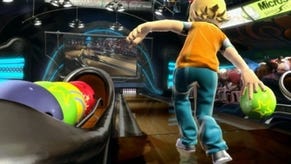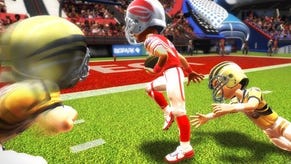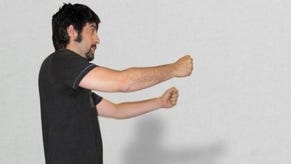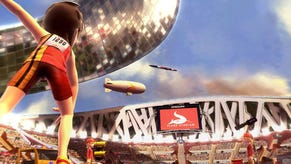Kinect Sports
Sporting gesture.
Once the king of core, Rare's latest incarnation in a turbulent existence is as standard-bearer for the Xbox casual revolution Microsoft hopes will be ignited by the arrival of Kinect.
The British studio's first offering for the device is a game that owes not just its existence but many of its ideas to the release that defined motion-control gaming four years ago: Wii Sports.
Making no attempt to disguise its influences, Kinect Sports features six main activities: Football, Bowling, Track & Field, Boxing, Volleyball and Table Tennis.
If you're looking for something to illustrate 'the Kinect difference', Football is a good place to start and a highlight of the game: here, unlike with rivals' tech, you use your feet.
Player movement is not controlled directly: as an attacker you kick the ball either to pass or shoot; as a defender you shimmy from side-to-side trying to block passes; in goal you need to use your full body to block shots.
It's so successful and so much fun because it's such an intensely physical experience, and the lack of a controller really does add to the sense of immersion. Whether kicking, heading or diving, it all plays to the unique strengths of Microsoft's hardware.
Track & Field splits into Javelin, Discus, Long Jump, Sprint and Hurdles and works exactly as you'd expect: jog on the spot to run, perform the relevant arm motion to throw. The real fun, as always in this genre, comes through competing with friends and family.
Bowling, Table Tennis and Boxing unavoidably feel like box-ticking inclusions according to the Nintendo blueprint, which is no bad thing in itself. In bowling, you reach to the left or right to grab a ball, aim and then swing your arm forwards – with a limited amount of control afforded over speed and spin.
Your left or right hand becomes the paddle in Table Tennis, with top-spin, back spin and smash shots possible. It's certainly fun, but does lack the subtlety of control offered by Move in the Sports Champions version, and, like Wii Sports Tennis, rarely do I feel I have a great deal of control over the direction of my shots.
Boxing is the game's weakest event by a knockout. It's a terribly messy affair that lacks any sense of making a connection with blows, the result being you might as well just be standing a room flapping your arms around.
Volleyball, finally, is a fairly unremarkable inclusion where actions are focused on the ball rather than the game – which is to say that you are serving, returning and blocking without, again, ever feeling like you're influencing where the ball goes.
Beyond the main sports, there are eight unique mini-games to play, plus the five Track & Field events available individually. It's the classic 'mixed bag', but some are fantastic fun.
Target Football is a personal favourite. Here you aim at targets in the goal mouth from the penalty spot and must beat the goalie to hit as many as possible against the clock. Kinect does an excellent job of judging shot direction making this a moreish delight.
Paddle Panic, also terrific fun, fires a constant and accelerating stream of balls across the table tennis table for you to hit back. The result is a breathless, arms-outstretched frenzy of right-and-left lurching. Great stuff.
At the end of each event you're treated to a compilation of your 'best bits' as captured by the camera. The moment I broke Ellie's ceiling light with an imaginary volleyball smash, for example.
Clips can be uploaded easily to www.kinectshare.com. Irritatingly, however, the only way to view them is to visit the website and login with the Windows Live ID linked to your Xbox account. From there you can download the file, delete or share directly with Facebook.
A brief word on lag. For a game as deliberately simple in design as Kinect Sports it's rarely noticeable as an issue. It only really becomes apparent when you spot the visual cues designed to work around it.
Goalkeeping requires split-second reactions, so to compensate for the unavoidable delay between your arm shooting out and your Avatar doing the same, the game flashes a symbol on-screen showing where the ball is heading. It doesn't hamper the enjoyment of Kinect Sports, but does highlight some of the technical constraints developers are dealing with.









